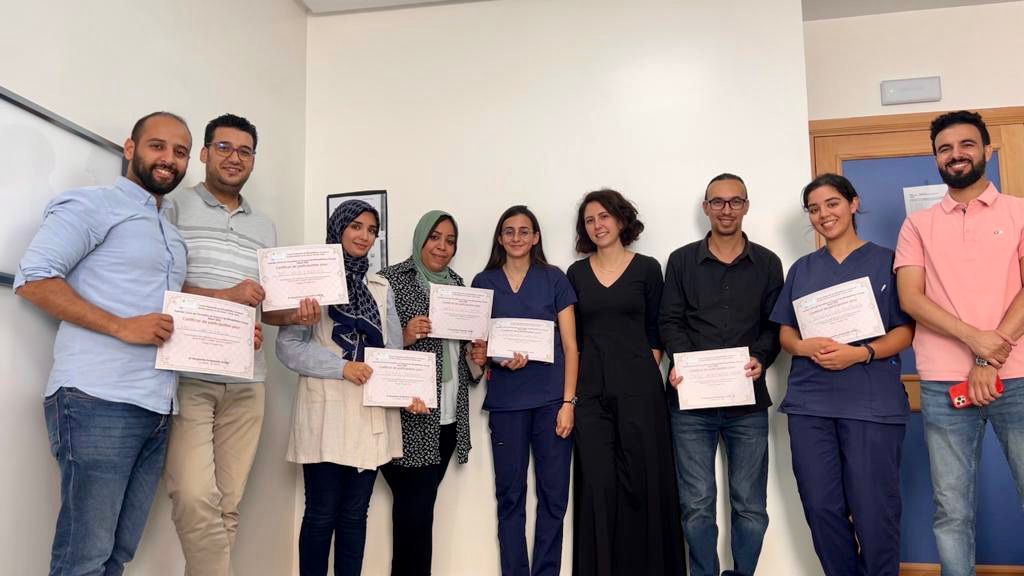The curricula developed on the basis of the international standards for vision rehabilitation, published by the National Low Vision Centre, take a further step forward on the international scene. Dr Filippo Amore, director of the National Low Vision Centre, and Dr Margherita Guidobaldi speak about this new achievement.
The International Rehabilitation Standards are the result of an international consultative process that lasted 7 years and focused on establishing international vision rehabilitation standards concerning the provision of services and the training of dedicated staff.
Through such process, which started back in 2013, international experts in the field reached an agreement on the curricula for human resources engaged in vision rehabilitation, including ophthalmologists, orthoptists, psychologists, child neurologists, O&M instructors, and teachers.
Following international consensus, differentiated rehabilitation paths were designed for children and adults, both in terms of rehabilitation procedures and the training of dedicated human resources (healthcare and non-healthcare professionals). Such differentiation also took into account the economic and development settings of individual countries.
“As a WHO collaborating centre for vision rehabilitation, we have transferred the training model described in the Standards to this first training experience in Morocco, which was held from 17 to 20 October 2022,” explains Dr Filippo Amore, director of the National Low Vision Centre. “Morocco is already one of our collaborating countries. For this reason, it was deemed as a suitable candidate for the implementation of the rehabilitation curricula and the launch of two vision rehabilitation initiatives.”
IAPB Italy contributed to the establishment of a vision rehabilitation centre at the Prince Moulay Abdallah public hospital in Salè, by providing optical and electronic devices, as well as eye tests for eye examinations. Orthoptists from the Moulay Abdallah hospital participated in the training course, along with some operators from the private eye care centre of the Hopital Universitaire International Cheikh Zaid in Rabat. This way the language of vision rehabilitation could be shared and standardised.
The meetings were conducted by Dr Margherita Guidobaldi, orthoptist of the National Low Vision Centre.
The aim was to create an eye care centre corresponding to the “Primary Plus” level of the International Rehabilitation Standards, where operators can perform refraction tests and possibly prescribe a rehabilitation aid.
· How was the training organised in Morocco?
The training was split into two phases, a theory part that was taught remotely and a practical session on site. For the theory section, along with Dr de Rossi, we prepared lessons in the form of slideshows, that we shared with our Moroccan colleagues ahead of my arrival. The lessons dealt with the definition, characteristics and causes of low vision, the assessment of distance and near visual function, and aids and their use. Once we arrived in Rabat, for the first two days we worked with the aids that had been donated to the hospital. Each participant had the opportunity to test the enlargements of the optical systems, understand how the handheld electronic video magnifier works and check the shades of the photo-selective filters. After that, I presented some clinical cases and together, we worked out individual rehabilitation paths based on the needs and visual functions of each patient.
· This meeting aimed to standardize rehabilitation procedures. Have you encountered any difficulties with your colleagues? What did you need to focus on the most?
I mainly focused on low-vision patient care (the admission to eye care services of low-vision patients) and on the near vision acuity assessment, performed with a Leat Reading Chart (BAL Chart, in Arabic). These are specific tests used in low vision centres, which are important to decide upon the type of aid and the lens power to be prescribed.
Since participants had no experience in this field, we also agreed to have online meetings for the following four months, in order to support them and discuss the rehabilitation paths they proposed to patients.
· Have there already been any results after the training meetings?
Two days before the end of the training, a patient with glaucoma was rehabilitated. Trainees analysed the requests and difficulties of the patient and assessed his distance and near visual function. Then they prescribed filters both for indoor and outdoor environments. The patient immediately noticed improvements, perceiving more contrast in indoor environments and less glare outdoors. As an aid to read from a short distance he chose a magnifying glass.
· What are your impressions about this first experience of training abroad?
It was an important experience. It certainly needs to be perfected, but it was a great start. There is a strong desire to help, we are satisfied and strongly believe it is useful to continue the project in other countries as well.



